- News
- Reviews
- Bikes
- Components
- Bar tape & grips
- Bottom brackets
- Brake & gear cables
- Brake & STI levers
- Brake pads & spares
- Brakes
- Cassettes & freewheels
- Chains
- Chainsets & chainrings
- Derailleurs - front
- Derailleurs - rear
- Forks
- Gear levers & shifters
- Groupsets
- Handlebars & extensions
- Headsets
- Hubs
- Inner tubes
- Pedals
- Quick releases & skewers
- Saddles
- Seatposts
- Stems
- Wheels
- Tyres
- Tubeless valves
- Accessories
- Accessories - misc
- Computer mounts
- Bags
- Bar ends
- Bike bags & cases
- Bottle cages
- Bottles
- Cameras
- Car racks
- Child seats
- Computers
- Glasses
- GPS units
- Helmets
- Lights - front
- Lights - rear
- Lights - sets
- Locks
- Mirrors
- Mudguards
- Racks
- Pumps & CO2 inflators
- Puncture kits
- Reflectives
- Smart watches
- Stands and racks
- Trailers
- Clothing
- Health, fitness and nutrition
- Tools and workshop
- Miscellaneous
- Buyers Guides
- Features
- Forum
- Recommends
- Podcast
feature
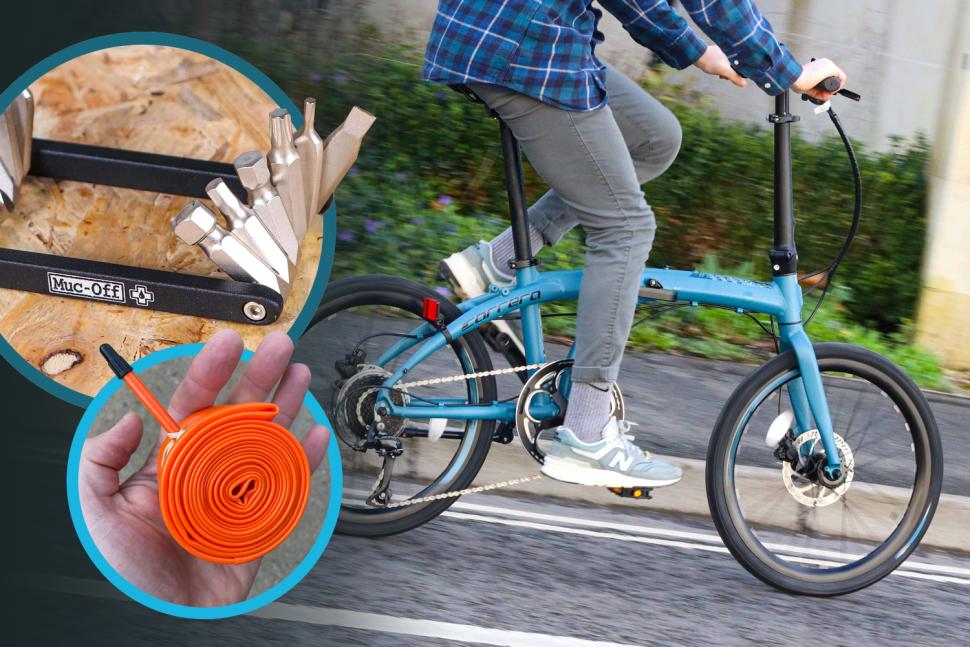 Common bike commuting mistakes and how to avoid them Sept 2024
Common bike commuting mistakes and how to avoid them Sept 2024Common bike commuting mistakes and how to avoid them — our top tips for hassle-free rides to and from work
Commuting by bike is a cost-effective alternative to driving or public transport, saving you time and stress by spending less time sitting in traffic or trying to find a parking space. It gives you a bit of exercise each day and is better for the environment, as well as saving you money in the long run. However, there are some common mistakes that can make your ride less enjoyable or even unsafe. Here are some common commuter mistakes and how to avoid them...
1. Not carrying spares or tools for roadside repairs
> How to keep your bike running smoothly
First on our list is to carry a spare tube, tyre levers, and a mini pump or CO2 canister to handle punctures - even if you're riding tubeless. Punctures are an unfortunate reality of cycling, and it’s important to be prepared for them, especially during your daily commutes if you have a meeting to get to at 9 am. Hopefully, you won’t need them, but you'll be glad to have them if you do.
A multi-tool is also a must-have for handling a range of issues that might come up during your commute. Minor mechanical failures don't need to be disastrous - they can often be fixed on the spot.
> A beginner's guide to building your first bike tool set
When choosing a multi-tool, make sure it has all the functions you need for your bike, including any sneaky Torx heads. It's also a good idea to familiarise yourself with some basic repair skills to stay prepared. Semi-regular bike maintenance on your bike will help you catch signs of wear or damage early, reducing the chances of problems occurring in the first place.
Carrying these essentials doesn’t need to take up a lot of room, especially with compact and lightweight options like TPU inner tubes available. Simply put them in your backpack, saddlebag or pannier and leave them there for whenever you need them. It's a good idea to store your spare tools and inner tube in a smaller bag to prevent them from rattling around in your rucksack or panniers and damaging the tube before you even need it.
2. Poor route planning
The route that you take to work will very much depend on where you live and where you’re heading but it’s worth considering the traffic volume, terrain and cycle infrastructure when planning your route to make it as stress-free as possible.
The shortest route or most direct route you'd take by car isn't always the best choice as it may include the busiest sections or the most elevation. By selecting the bike icon on Google Maps, you can find more cycle-friendly routes between your house and the office. Other platforms like Strava, Komoot and Cycle Streets also offer useful mapping tools. Some GPS devices, such as Garmin, even provide popularity routing, using data from online activities to recommend the most popular and cyclist-friendly routes between two points.
It’s worth familiarising yourself with your planned route, perhaps by riding it at the weekend before your first commute. You can also vary your route from day to day to keep things interesting.
3. Skimping on a lock
You might be tempted to buy a cheap lock but it's a false economy especially if you turn up at the end of the working day to find that your bike is no longer where you left it.
Don't be afraid to invest - no matter how much you spend, it’ll always be less than the cost of replacing a stolen bike and the hassle of working out how you’re then going to get home.
Look for locks with a Sold Secure Gold rating, such as the Kryptonite Kryptolok Standard U-Lock (£36.99). Some locks can attach to your bike or fit in your rucksack or panniers, but if you don’t want to lug a heavy lock on your commute, consider leaving one at work.
4. Letting your lights run out of charge
Uh oh, it’s 5:30pm in the middle of winter, you get on your bike to ride home and you find that your bike lights are out of juice. It happens!
You could consider investing in dynamo lights, which generate power as you cycle so your lights will never go out. For rechargeable lights, get into a very strict charging routine - keep a charger at work so you can recharge your lights during the day so they're ready for your ride home.
As a backup, carry a couple of emergency lights in your bag; they're small and lightweight so you'll barely notice them. Alternatively, use multiple lights on your bike, making sure they are at different charge levels to reduce the risk of both running out at the same time.
5. Forgetting a change of clothes
One of the worst things to happen is forgetting a piece of clothing. While forgetting your underwear may happen at least once and might be manageable for a day, forgetting your trousers is a much bigger issue. Our top tip is to keep a set of clothes at the office - either leave a spare set in a bag or bring some in on Monday and take it home on Friday to wash.
The same applies to not having dry kit for the ride home, as there’s nothing worse than putting soggy kit back on. If your cycle clothing gets wet on the way to work, you’ll need to dry it out during the day or have a spare set ready for the journey back. Since there’s no trusting the UK weather forecast, it’s definitely worth keeping some spare kit tucked away at work for when you’re in dire need.
6. Riding without mudguards
You can't always choose the time of day you ride to and from work, so encountering rain and wet roads is sometimes unavoidable. If you’re riding in cycling clothing you might not be too bothered if you get wet, but if you’re riding in clothes you’re going to wear for the rest of the day, it can be quite inconvenient.
Mudguards make a huge difference during your ride. They prevent spray from your tyres from soaking you, your bike, and any items you might be carrying.
7. Hugging the kerb
> Road cycling for beginners: 10 tips to transform your cycling experience
Sitting in the gutter and not riding defensively can increase your risk of accidents and reduce your ability to respond effectively to potentially dangerous situations.
There are many reasons not to hug the kerb. Generally, roads camber off to the curb so it's where everything collects which can increase the risk of punctures. It’s also where slippery drain covers are positioned, it’s where pedestrians step out and it can also make you less visible and tempt motorists to squeeze past when there’s not enough room for them to do it safely.
Riding too close to parked cars can also be dangerous because those car doors sometimes open…
For these reasons, take up the primary position in the centre of your lane when you feel that's the best option. You're fully entitled to do so and it's often the safest choice.
8. Poor clothing choices
There’s no right or wrong when it comes to what you should wear while commuting by bike - ultimately, you should choose what works best for you. However, some clothing options can make your ride more comfortable, especially for longer commutes.
If you wear jeans at work and have ever attempted to ride to work in them, you might have noticed how uncomfortable they can become over a longer distance, which can detract from the enjoyment of your ride.
While Lycra cycling shorts will provide plenty of comfort for longer rides, they might be excessive for your daily commute. Fortunately, there are plenty of cycle-specific jeans, trousers and shorts out there that are designed for both on and off the bike, so there’s no need to change when you get to work.
9. Racing!
Many of us have found ourselves unexpectedly caught in a race with a stranger, chasing an imaginary finish line for reasons we can’t quite explain. While the thrill of competition is tempting, it can risk your safety and leave you hot and sweaty - certainly not ideal if you plan to wear the same clothes for the rest of the day.
If you’re a Strava user, it’s best to avoid getting too caught up in chasing KoM or QoM segments during your daily commute and save the racing and segment hunting for the weekends.
10. Trusting the weather forecast
Weather forecasts can provide a general idea of what to expect, but they’re not always accurate, and conditions - especially in the UK - can change quickly. To avoid being caught off guard, it's a good idea to carry a small, packable waterproof jacket at all times.
Consider investing in cycling-specific clothing designed to handle various weather conditions. Items like windproof and waterproof jackets, waterproof trousers and thermal jerseys can make a big difference. `
With the right gear, you’ll stay dry and comfortable on your commute, no matter what the weather brings.
What are your commuting mishap stories? Let us know in the comments section below.
Emily is our track and road racing specialist, having represented Great Britain at the World and European Track Championships. With a National Title up her sleeve, Emily has just completed her Master’s in Sports Psychology at Loughborough University where she raced for Elite Development Team, Loughborough Lightning.
Emily is our go-to for all things training and when not riding or racing bikes, you can find her online shopping or booking flights…the rest of the office is now considering painting their nails to see if that’s the secret to going fast…
Latest Comments
- eeney 28 min 36 sec ago
Bont double wide wearer here. Even Lake, for me, are too narrow in the toebox and midfoot, but Lake work for a lot of people....
- ktache 44 min 54 sec ago
I seem to recall saint Chris being more on recent BBC road cycling coverage rather than less.
- Rendel Harris 1 hour 4 min ago
So either it has to have the characteristics of a pogo stick or, more likely, that's a typo for "bunch sprint", which is equally nonsensical...
- chrisonabike 1 hour 56 min ago
I never heard of anyone having their leg sliced off / unexpectedly wiping out using a spoon brake, but discs...
- chrisonabike 1 hour 58 min ago
Meanwhile, in the Netherlands... (cycling to hospital, s''Hertogenbosch, Utrecht. Cycling to hospital and cycle parking, Assen)....
- Rendel Harris 2 hours 24 min ago
Sorry to say but your current trainer isn't going to be much use for online training in the way you describe, your virtual trainer will rely on not...
- andystow 3 hours 14 min ago
🎵 Sunshine on my shoulders makes me happy, sunshine in my eyes can make me crash. 🎵
- Jack Sexty 3 hours 39 min ago
The main featured link goes to the actual product - unfortunately the auto-generated widget is pulling in links to the old product right now, but...
- mike the bike 4 hours 10 min ago
Me too. And, somewhere in the shrubbery, there lurks a pheasant who achieved high office in said RCUK.
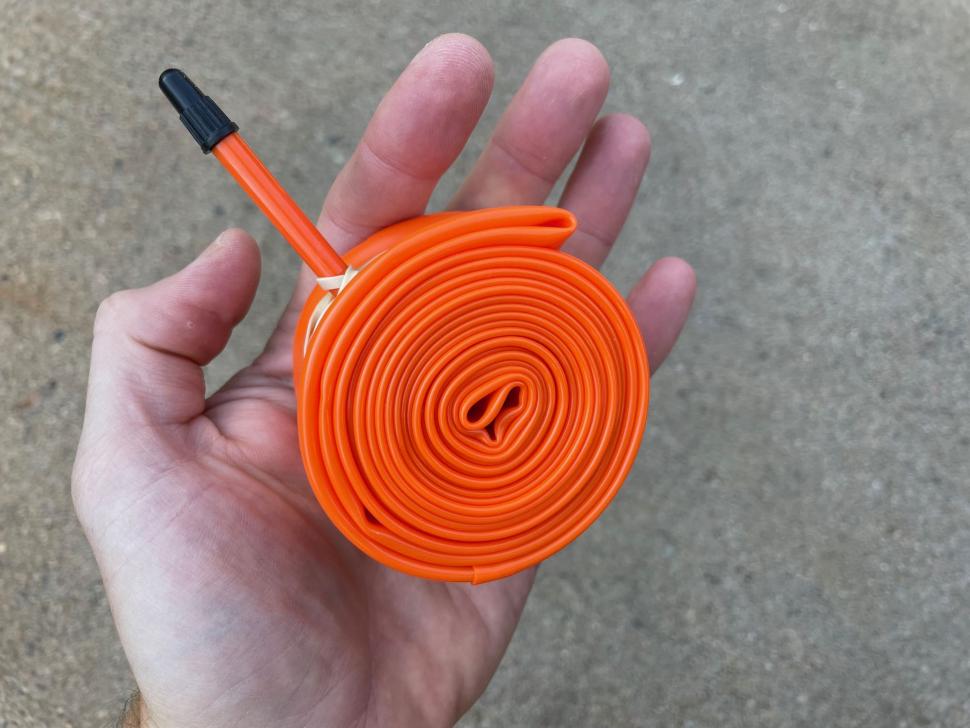

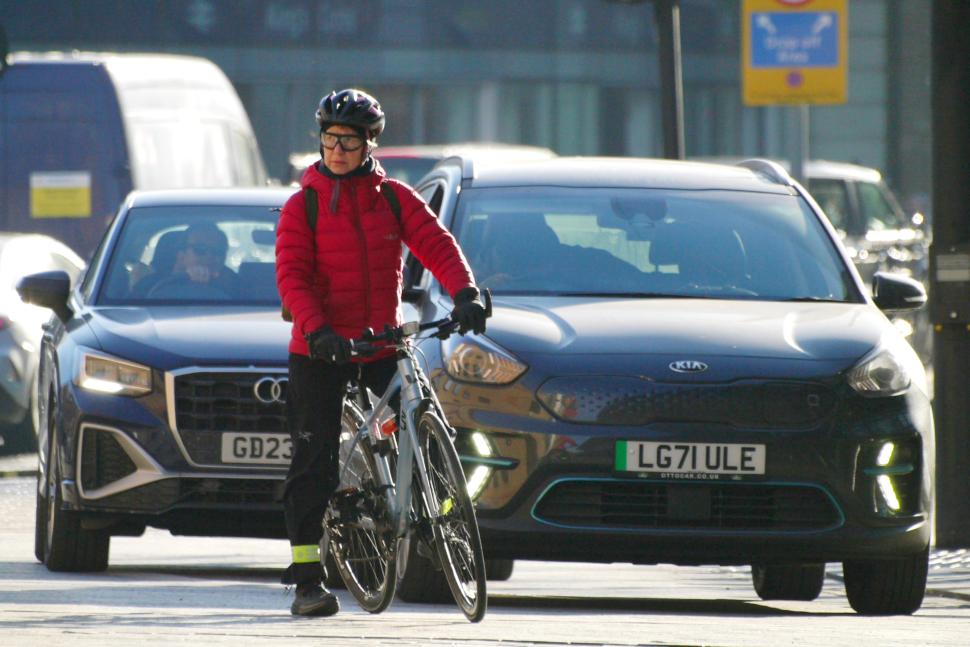


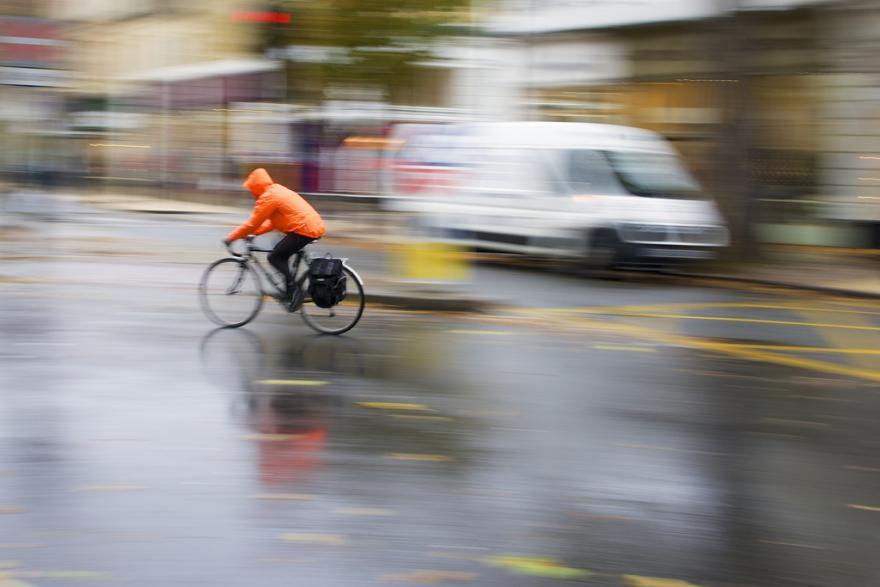


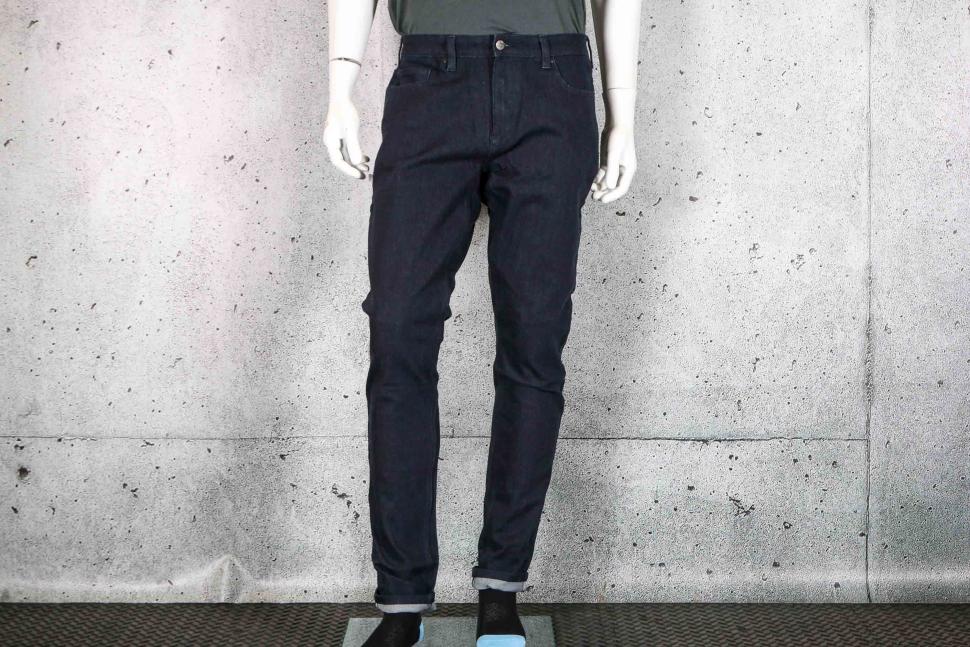
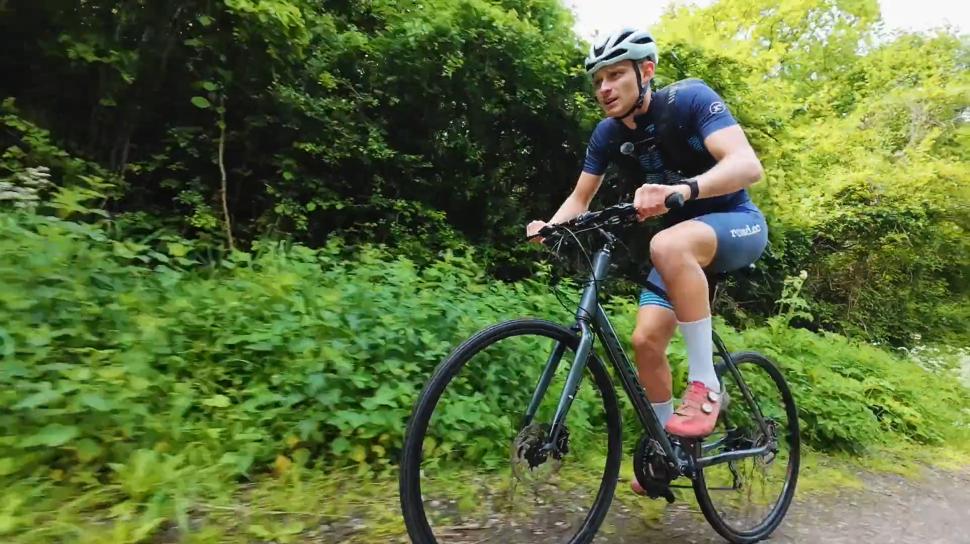

Add new comment
91 comments
Well if you will insist on wearing that USPS kit...
Pages